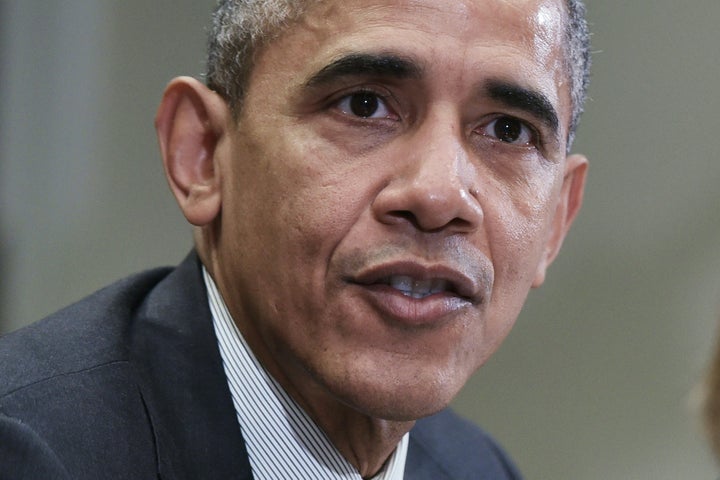
WASHINGTON -- The fate of the single biggest piece of President Barack Obama’s climate change legacy was thrown into question Tuesday evening when the Supreme Court blocked the president’s carbon emissions regulation for existing power plants from moving forward.
In a 5-4 decision, the court granted the stay to 29 states and a slew of industry groups that are appealing the rule. Oral arguments at a federal appeals court in Washington will take place in June.
In August, the Environmental Protection Agency finalized the rule, which mandates existing power plants reduce carbon dioxide emissions 32 percent from 2005 levels by 2030. The administration estimated that once in effect, the regulation would reduce carbon dioxide pollution by 870 million tons -- equal to the amount produced by 108 million homes or 166 million cars.
The Supreme Court’s decision does not mean justices will ultimately strike down the regulation, but it doesn’t bode well for the EPA.
Opponents of the rule were quick to cheer the decision. House Speaker Paul Ryan (R-Wis.) praised the court, and charged that the rule should “be struck down permanently before coal country is destroyed completely.”
West Virginia Attorney General Patrick Morrisey called it a “great victory” for his state, which is suing the administration over the carbon rule.
“We are thrilled that the Supreme Court realized the rule’s immediate impact and froze its implementation, protecting workers and saving countless dollars as our fight against its legality continues,” Morrisey said.
The White House, on the other hand, is “confident that we will prevail on the merits,” said spokesman Josh Earnest.
“The Clean Power Plan is based on a strong legal and technical foundation, gives States the time and flexibility they need to develop tailored, cost-effective plans to reduce their emissions, and will deliver better air quality, improved public health, clean energy investment and jobs across the country, and major progress in our efforts to confront the risks posed by climate change,” he said.
On a call with reporters later Tuesday night, senior administration officials downplayed the court's decision, calling it a "temporary procedural determination."
"[It] does nothing to affect first, our confidence in the legal soundness of this rule, and it also does nothing to affect our determination to continue to move forward," said one senior administration official.
While the decision in practice puts a hold on implementation of the regulations, the administration officials were quick to point out that states were given a "generous timeline" to comply -- plans don't have to be submitted until 2018.
Pressed on whether the court's action would jeopardize the agreement finalized between the U.S. and nearly 200 nations to reduce greenhouse gas emissions, officials said the administration is not afraid partners in the climate accord will back out.
The EPA defended the rule, vowing to continue to address carbon pollution.
"We're disappointed the rule has been stayed, but you can't stay climate change and you can't stay climate action," EPA spokeswoman Melissa Harrison said.
But the potential ramifications of the Supreme Court’s order were not lost on supporters of the president’s signature climate rule.
“The Supreme Court’s deeply misguided decision to stay the implementation of the Clean Power Plan will enable those states that deny climate science to slow progress in reducing the carbon pollution that threatens the health of all Americans,” House Minority Leader Nancy Pelosi (D-Calif.) said in a statement.
The justices did not offer details explaining their decision, but the order implies they likely view the rule as one that would place too heavy a burden on businesses and states. The stay effectively leaves the fate of Obama’s landmark climate rule hanging in the balance until after he leaves office -- meaning the stakes in 2016 are elevated even more when it comes to climate change policies.
Billionaire climate activist Tom Steyer was quick to point out that the future of Obama’s legacy could very well rest on who is elected president and may be able to appoint up to three justices to the Supreme Court.
"Today's decision amounts to a dangerous halt to progress on this most pressing issue,” Steyer said. “Our next president will have the responsibility to select Supreme Court justices, and today’s decision reminds us how critical these selections will be to keeping our families healthy, safe and economically secure."
One court expert, Sam Bagenstos of the University of Michigan’s law school, offered analysis that backers of the administration's climate plan might welcome. Bagenstos explained that the five justices in the majority may have been “persuaded” that the regulation “would require significant investments from businesses and that those businesses shouldn't have to make those investments before the courts have a chance to decide whether the rules are consistent with the law.”
Also on HuffPost:

